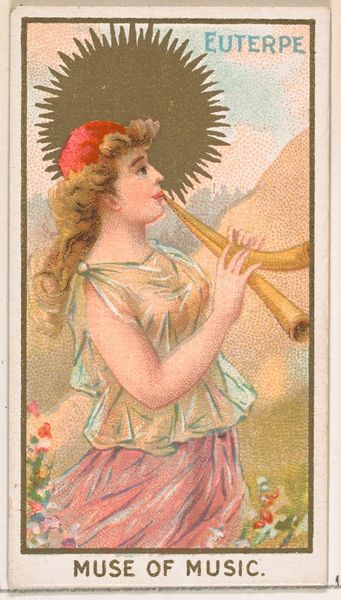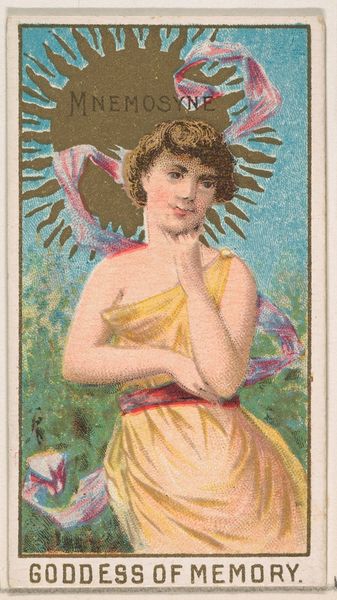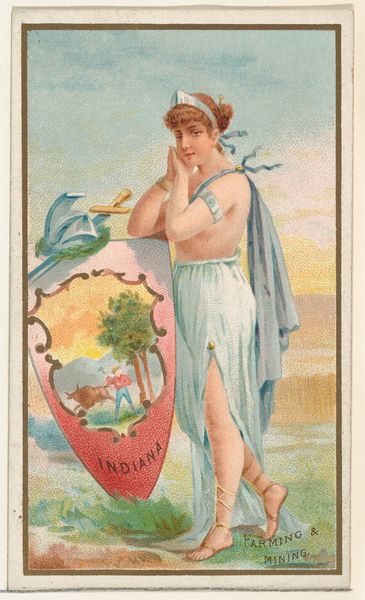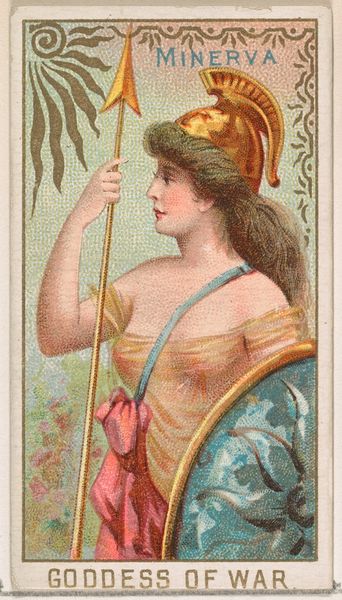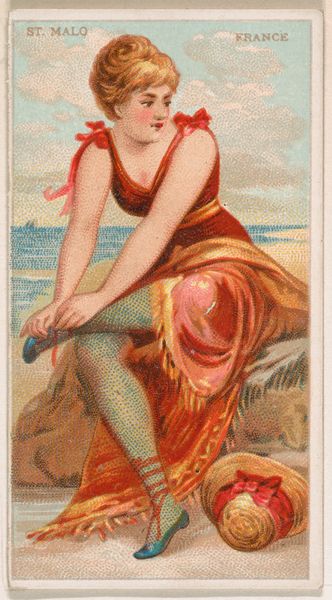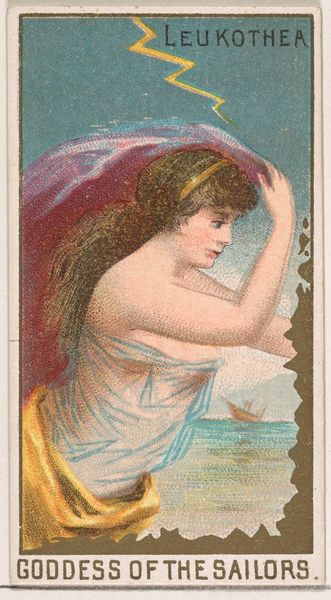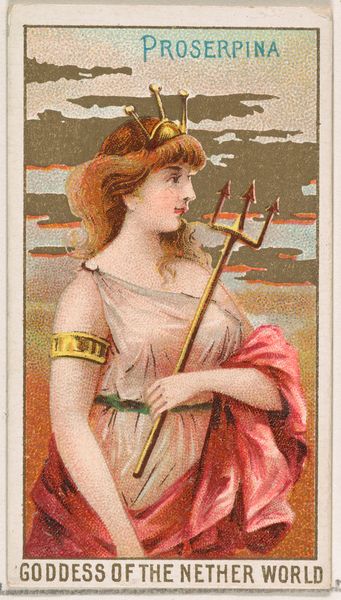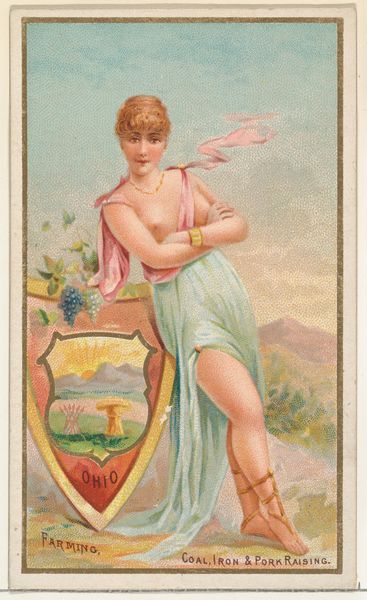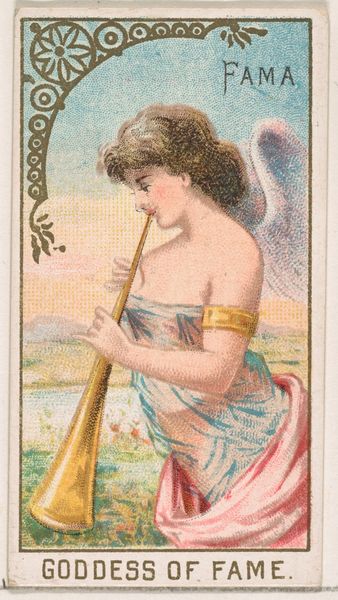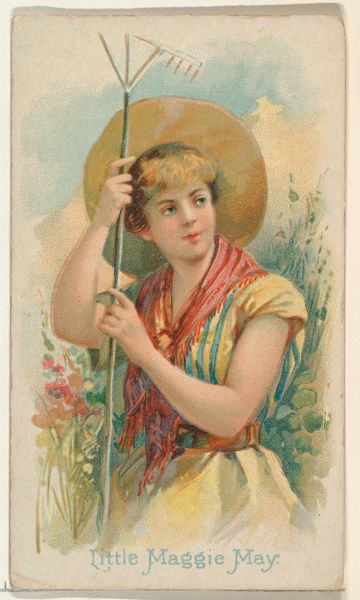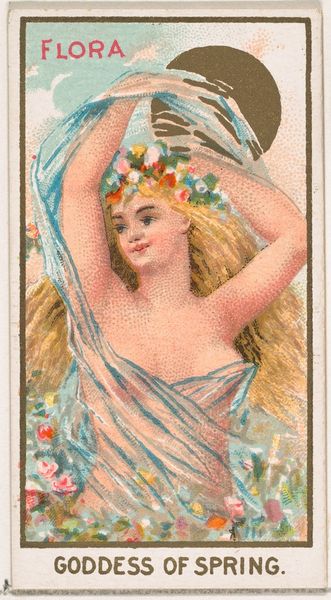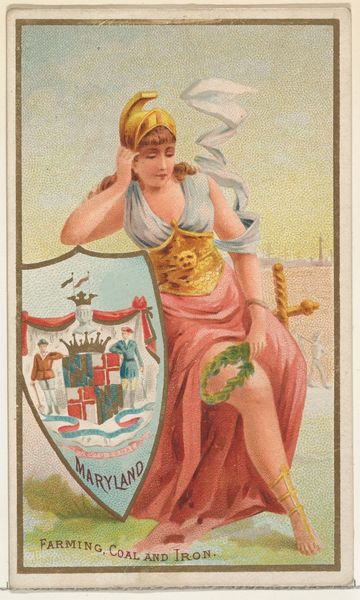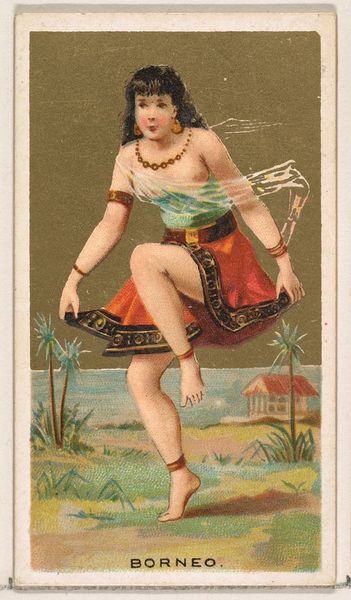
Urania, Muse of Astronomy, from the Goddesses of the Greeks and Romans series (N188) issued by Wm. S. Kimball & Co. 1889
0:00
0:00
drawing, print, watercolor
#
portrait
#
drawing
#
water colours
# print
#
oil painting
#
watercolor
#
watercolour illustration
#
academic-art
#
portrait art
Dimensions: Sheet: 2 3/4 × 1 1/2 in. (7 × 3.8 cm)
Copyright: Public Domain
Curator: I'm drawn to the ethereal quality of "Urania, Muse of Astronomy," from the Goddesses of the Greeks and Romans series, created in 1889 by Wm. S. Kimball & Co. What is your first impression? Editor: It feels delicate, almost ephemeral, like something printed on silk. The colours are soft, and there's a kind of faded glamour to it. Curator: Precisely! This print is part of a larger conversation about the representation of women, specifically in their allegorical forms, popular in the late 19th century. We must consider how these images, designed for mass consumption, reinforce certain patriarchal ideals while ostensibly celebrating female figures. The way she is styled seems to align with classical aesthetics, yet is modified to match contemporaneous fashion. Editor: Right. The materials tell their own story. The printing process—likely lithography, judging from the smooth gradations of tone—meant it could be reproduced cheaply and widely distributed as part of a product like cigarettes. The intent was certainly not to democratize knowledge, but rather commodify a certain idealized version of intellect for profit. This also begs the question as to the role of the model. Was she properly compensated, and who benefits the most from this image's creation? Curator: Exactly. And the figure of Urania herself – Muse of Astronomy – holds her tools almost passively, gazing demurely away. I think there is much to examine in this seeming paradox. Consider, too, the positioning of the stars. Is she empowered or limited by her association with science? Editor: Looking at it this way shows how artistic, cultural, and production aspects of artworks and media are more inextricably linked than ever, and that understanding materials allows us to address socioeconomic and even environmental aspects as well. Curator: This work truly speaks volumes about the confluence of mythology, gender dynamics, and industrial processes in the 19th century. It leaves one contemplating what stories the stars themselves could tell, from a different perspective. Editor: It invites us to look at the bigger picture, beyond the beautiful rendering of a mythological figure and acknowledge that its manufacture occurred during labor and consumer injustices of that era.
Comments
No comments
Be the first to comment and join the conversation on the ultimate creative platform.


